1963 HOFNER ARTIST SOLID BASS GUITAR
Serial No. 1619
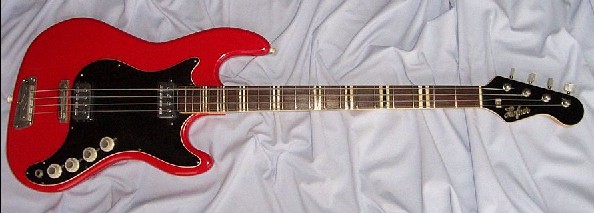
Hofner's first solid bass appeared around 1961, and was based (excuse the pun!) upon the V2/3 (172/3(i)) guitar model. It had two
"toast-rack" pickups which were located close to each other adjacent to the neck. Controls were the classic Hofner consul, with two volumes and three flick switches, and a dark translucent cherry red finish was offered. The neck was glued into the body.
When the Super V2/3 was introduced in 1962, with its Strat shaped body, the solid bass also changed to that body shape with a bolt-on neck, and the Hofner Model 182 was born. The two pickups and Hofner control consul were retained on the new bass, but now the pickups were located as far apart as possible. This bass was sold by Selmer in the UK, exclusively in a bright red finish with clear
lacquered neck to satisfy the Shadow mania then prevalent, although the European market was treated to red, white, and sunburst finishes, but generally with a black finished neck.
A few months later, when the Super Solids replaced the Super Vs, a single pickup version of the 182 called the Professional Bass appeared in the UK, fitted with two rotary controls, and in the UK the twin pickup version disappeared to be replaced by the Artist Bass. This new model had a stylish "off-set waist" (obviously influenced by the Fender Jazz Bass), improved machine heads, and four rotary
controls.
In Europe and elsewhere, the two pickup 182 model was continued, together with a slightly upgraded version of the UK Artist called the Model 185.
The Professional Bass was only supplied to the UK for a couple of years, 1962 - 63. The Artist fared much better however, being available from 1962 until the end of that decade in the UK, with the Model 185 lasting into the 1980's. The Model 182 was also continued until about 1985.
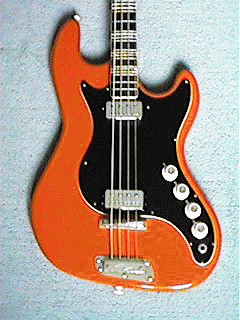
The two extras fitted to the Model 185, but not to the UK Artist, were individual slide controls on the scratch plate for each pickup, and secondary fret position marker dots on the edge of the fingerboard. Also, as with the Model 182, the 185 generally had a black
lacquered neck, and the Artist's was finished in clear
lacquer.
Usually, the bodies of Hofner solids are made of abachi timber, and a veneer of mahogany glued on the top and back of the body with the grain of the
veneer running across the main body grain. This does not seem to be the case with my guitar however, as joint lines are visible through the finish running the length of the body. No veneers have therefore been fitted. The guitar is very light; all this indicating that just three pieces of abachi have been used for the body.
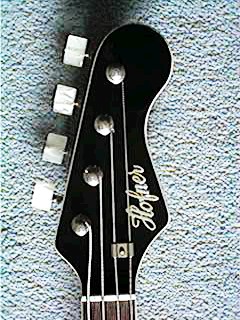
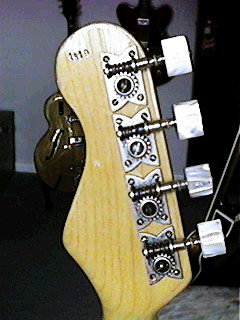
The neck is made of a single piece of maple. Some 182/185 necks that I have seen have been beautifully flamed. Unfortunately the neck on my bass is plain. However, it is one of the
thinnest necks that I have ever come across on a bass guitar. That, together with the instrument's light weight, make it a pleasure to play.
The fingerboard is good quality rosewood, with Verithin type fret markers made of imitation tortoiseshell and plastic mother of pearl. The fingerboard is bound, and a black/white plastic laminate is used to face up the headstock. The plastic raised Hofner logo is the same as fitted to post 1964 500/1 (Violin) Basses.
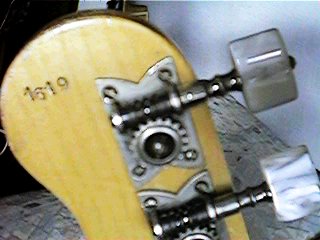
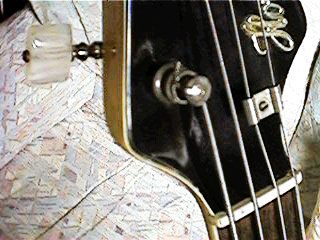
Machine heads are of excellent quality, and have larger gearing and thicker spindles than most other Hofner basses, including the 182 model. The bridge is of a simple design, having only overall height adjustment by means of two adjustment wheels. The tailpiece again is very simple, but it does the business and looks right on the guitar. A
30" scale (medium scale) is used on this bass, just like the 500/1, but noticeably shorter than the 34" Long scale Fender Jazz and Precision.
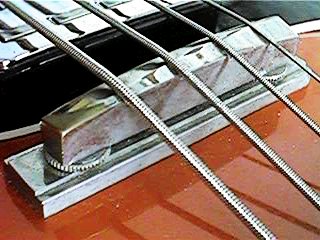
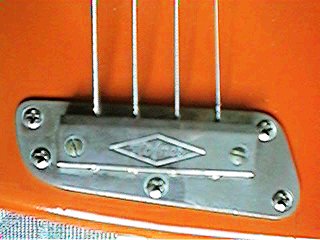
In 1963, the humbucking "Staple" pickups were just being introduced across the Hofner range, and are hence fitted to this guitar. Later 185s (from about 1967) were fitted with the
"Blade" type pickups (See the Pickup Page). Two rotary volume and two tone controls are fitted, but all interact with each other, making any attempt at subtle on-stage adjustment a nightmare! The two additional slide switches fitted to the Model 185 for controlling the individual pickup units may help matters.....but on the
other hand, maybe not! The bass does sound good though, with a wide range of sounds and excellent tone.
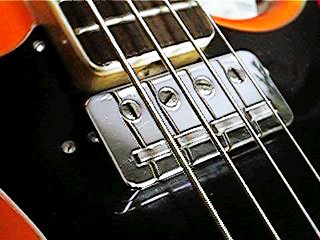
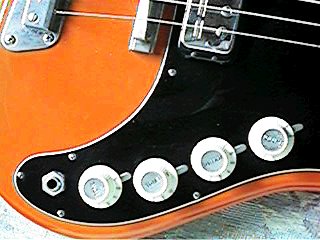
All in all, a very nice solid bass, which seems to have been very successful for Hofner, bearing in mind its long production run through to 1983 in its Model 185 guise.










